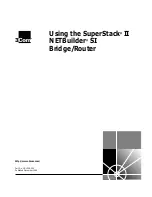
Chapter 4. Web Configuration & Operation
90
CHAPTER 3
WEB OPERATION & CONFIGURATION
3.8.4 CIST Ports
CIST Aggregated Port Configuration
Port:
The port number.
STP Enabled:
Enable STP function
Path Cost:
Path cost is used to determine the best path between devices. If “Auto” mode is selected, the system
automatically detects the speed and duplex mode to decide the path cost. Select “Specific”, if you want to use user-
defined value. Valid values are 1 to 200000000. Please note that path cost takes precedence over port priority.
Priority:
Select port priority.
Admin Edge:
If an interface is attached to end nodes, you can set it to “Edge”.
Auto Edge:
Select the checkbox to enable this feature. When enabled, a port is automatically determined to be at the
edge of the network when it receives no BPDUs.
Restricted Role:
If enabled, this causes the port not to be selected as Root Port for the CIST or any MSTI, even if it has
the best spanning tree priority.
Restricted TCN:
If enabled, this causes the port not to propagate received topology change notifications and topology
changes to other ports.
BPDU Guard:
This feature protects ports from receiving BPDUs. It can prevent loops by shutting down a port when a
BPDU is received instead of putting it into the spanning tree discarding state. If enabled, the port will disable itself
upon receiving valid BPDU's.
Point-to-Point:
Select the link type attached to an interface.
Auto:
The switch automatically determines whether the interface is attached to a point-to-point link or shared
medium.
Forced True:
It is a point-to-point connection.
Forced False:
It is a shared medium connection.
















































